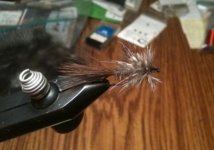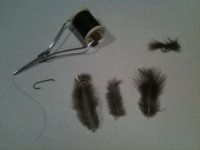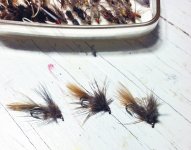dc410
Well-known member
I accomplished restocking my pheasant feathers today. I came across a real fresh male ringneck pheasant along Rte 183 near Blue Marsh Lake. This is the time of year that I often find some stocked pheasants killed on roadways near State Game Lands. I tie a very productive nymph pattern that totally uses pheasant feathers for the material list. I generally look for two types of feathers. The pheasant marabou (a real nice short brown marabou type feather) located between the legs of the male ringneck are used for tail material. The "church windows", which are the irridescent bluish-green, nicely marked feathers located low on the back not far above the tail that I use as hackle tied in soft hackle style. The phylo feather (palmered as a head) is found attached to the back side of each church window feather. The tail feathers (the most well known ringneck tying material) on a stocked bird often are damaged much like the fins on a stocked trout and are generally not very useful for tying, in fact today's bird didn't even have a tail. Keep your eyes open out on the road, you may come across some real good tying materials that otherwise would just go to waste.







